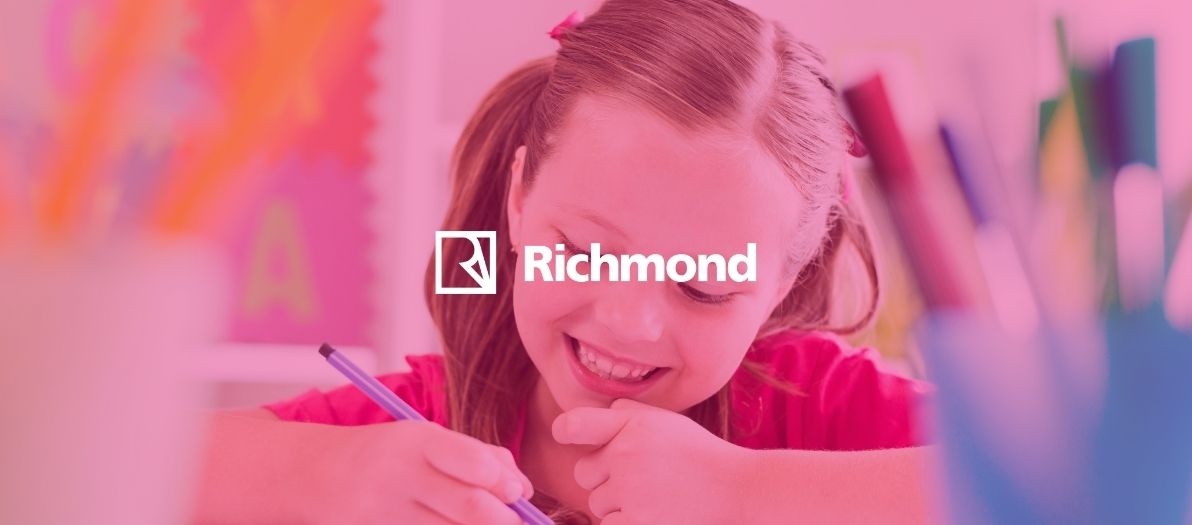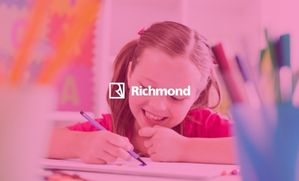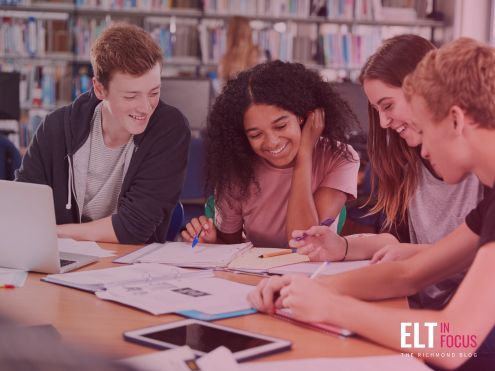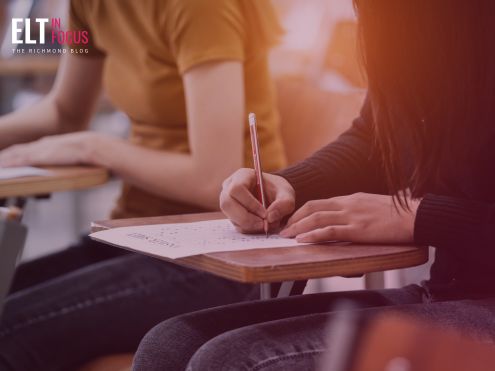Firstly, just what is Task Based Learning?
In traditional approaches to teaching, lessons are designed with the language as the primary focus. Teachers follow a syllabus that lists the grammar and vocabulary to be taught and they use materials that are designed specifically with this language in mind.
In contrast, in TBL, (Task-based Learning) the focus of the lesson is an engaging task. The language needed to complete the task successfully emerges naturally as students go through each stage of the process. The idea is that students use English in the same way as they would use their first languages in the real world. The tasks mimic real life situations and typically require a meaningful communication situation, such as organising a party, preparing for a job interview or making a “how to” video for social media. Once a task is completed, the teacher usually discusses the language the students have used.
In a TBL lesson, students use the language they already have to communicate in order to achieve a specific outcome. When they need new language, the teacher is on hand to provide it. This “need to know” approach is the key to successful learning. Students are able to see for themselves that language learning has a purpose and there are very real reasons, a “need” for having key language.
Are all TBL lessons the same?
Good question! No, no two TBL lessons are identical. In fact, teachers are free to decide when and how to present and practise new language, and also how and when to provide feedback. By choosing tasks which replicate things that students might do in their everyday life in their own language, the approach is considered to be much more authentic than traditional language classroom activities. TBL is also useful in a mixed-ability classroom, as each student asks for the language they need. Sometimes a task is followed by a reflection process where students write a report about their experience, including the steps they took and the language they used.
How do TBL and Sustainability fit together
If you’re interested in addressing aspects of sustainability in the classroom, TBL is a great option. All that is needed is a meaningful task which focuses on the environment.
Here are some task examples for different age groups and levels.
Make a poster about the importance of not wasting water.
- Create and conduct a survey about people’s recycling habits.
- Find out what your class’s carbon footprint.
- Write reviews about some eco-friendly products.
- Give a presentation about fast fashion.
- Organise a book exchange event in your school.
- Make a short video about an environmental issue in your area.
- Plan a trip to a recycling centre.
- Design an eco-friendly park for your community.
- Write a fact-file about greenwashing.
What does a typical TBL lesson look like?
Most TBL lessons follow a simple format:
1- The topic and task are introduced.
2- The task is carried out.
3- Language input and feedback is given. This can take place after or during stage 2.
Step-by-step
The following “Planning an educational trip” lesson stages can be adapted to different ages and levels.
1- Introduce the topic by asking your students to share their experiences of educational trips they’ve been on, saying what they liked and what they didn’t like. If necessary, provide a few prompts: destination, transport, food, price, learning, best memories.
2- Put students into groups of four to carry out the task. Provide the instructions and tell them how long they have to complete their task. (e.g., 45 minutes).
Task
Your science teacher has agreed to take the class on a day trip. The trip must be educational, with a focus on the environment and sustainability. Every aspect of the trip must be as “green” as possible.
Think about:
- Destination
- Transport
- Food and drink
Now research and plan your trip. Ask your teacher for help when you need it. You will present your ideas to the rest of the class.
3- Monitor students as they work, helping where necessary and making a note of the language they use.
4- Watch the presentations and encourage students to comment on each other’s ideas.
5- Have a class discussion about the task, using some prompt questions. E.g.,
- Did you enjoy the task? Why?
- Which parts of the task were most interesting?
- What did you do first? What did you do after that? Etc.
- What language did you use?
- What help did you need?
- What did you learn by doing this task? Think about language, skills, information, etc.
Find out more
For more information on Task-based learning, this is a good place to start: British Council.
For more information on sustainability, try here: United Nations.
Good luck!









